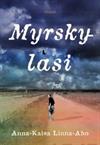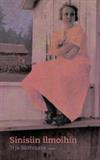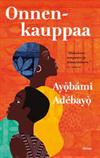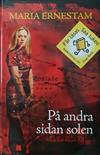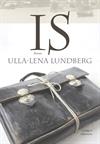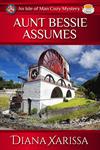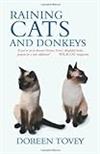Enemy of God
2 journalers for this copy...
This book was donated to me for the purpose of BookCrossing.
Journal Entry 2 by  AylaMey
AylaMey at StationsBoekWissel boven in Utrecht, Utrecht Netherlands on Thursday, January 3, 2019
at StationsBoekWissel boven in Utrecht, Utrecht Netherlands on Thursday, January 3, 2019
 AylaMey
AylaMey at StationsBoekWissel boven in Utrecht, Utrecht Netherlands on Thursday, January 3, 2019
at StationsBoekWissel boven in Utrecht, Utrecht Netherlands on Thursday, January 3, 2019
Released 5 yrs ago (1/3/2019 UTC) at StationsBoekWissel boven in Utrecht, Utrecht Netherlands
WILD RELEASE NOTES:
Hey!
You have found a book. Thank you for visiting this website. Here you can report your finding anonymously so that I know that the book has ended up well.
You may read the book, pass it on, or leave it somewhere 'in the wild' again. If you want you can sign up (free! and spamfree!) so that you can follow the journey of this book.
Enjoy reading!
You have found a book. Thank you for visiting this website. Here you can report your finding anonymously so that I know that the book has ended up well.
You may read the book, pass it on, or leave it somewhere 'in the wild' again. If you want you can sign up (free! and spamfree!) so that you can follow the journey of this book.
Enjoy reading!
(I took care to give no obvious spoilers about the story)
Title: Enemy of God (on Librarything, Hebban.nl, Goodreads)
Author: Bernard Cornwell
Language: English
Series: The Warlord Chronicles 2/3
Format of publication: paperback pocket
Number of pages: 473
Publisher: Penguin
Year published: original 1996, my edition 1997
ISBN number: 0140232478
BookCrossing ID: 15314109
Topics: Arthur stories placed in a more realistic setting.
Reason for reading: I thought the first book was interesting. I found this Bookcrossing book at Utrecht Central Station.
Recommended: Yes, if you've read the first book.
Buy / Borrow / Bypass: Borrow.
Short summary:
While Mordred is growing up, Arthur tries his best to create a peaceful country for Mordred to rule over once he becomes king.
Back cover text:
Arthur has won his bloody victory at Lugg Vale and the kingdoms are finally united. Mordred's throne is safe, Guinevere is to bear Arthur a child, and Lancelot is to marry Ceinwyn. After one last battle against the Saxons, Arthur will rule a peaceful, orderly land.
But, unlike Merlin, Arthur has forgotten the Gods, who thrive on chaos. Merlim, weaver of charms, knows that if the Gods are to be restored he must bring together Britain's thirteen sacred objects. Derfel, the stalwart of Arthur's shield wall, is drawn into Merlin's intrigues and Arthur's plans are thrown into turmoil...
First paragraph:
Today I have been thinking about the dead.
This is the last day of the old year. The bracken on the hill has turned brown, the elms at the valley's end have lost their leaves and the winter slaughter of our cattle has begun. Tonight is Samain Eve.
Tonight the curtain that separates the dead from the living will quiver, fray, and finally vanish. Tonight the dead will cross the bridge of swords. Tonight the dead will come from the Otherworld to this world, but we shall not see them. They will be shadows in darkness, mere whispers of wind in a windless night, but they will be here.
Comments on the first paragraph:
The story is told by Derfel, a character known from the first book in the series, but not from the original Arthur legends.
Review:
Story:
It's a continuation of the story in the first book, but at the beginning the author gives a summary of what happened before, so he can have the story continue exactly where the previous book ended.
The book contains several stories, but most of it consists of Arthur trying to bring peace and create a country without war, while Mordred is growing up. Arthur doesn't want to be king and is sure that Mordred is going to take up this role, but even as a child, Mordred's character isn't very king-like.
At the beginning, Merlin plays a big role, as there is a sub-story of Merlin trying to collect the Treasures of Britain. Then for a while, Merlin keeps quiet, until he has a good reason to play a bit more of an active role again. In the same manner, other characters like Lancelot play a larger role for a while, then go off busying themselves with something else, and then return to the main story.
What makes this an interesting Arthur story, is that the characters feel very realistic. They're not characters from a legend, they're men and women who live real lives and have to fight to survive and to be able to live in the kind of world in which they want to live.
There is magic (from the old religion, practiced by people like Merlin and Nimue), but the author describes this in such a way that it can be both real magic or clever "social manipulation", in which people believe it because there is no other explanation they can think of (and Merlin makes clever use of people's beliefs). Though the other religions (Christianity and the worships of Isis and Mithras) can't be explained in both a magic and a realistic way - those religions are just ceremonies practiced by humans and those gods are entirely absent from the world, even though people do believe their actions will be seen by their gods. The conflict between the rise of Christianity and the waning popularity of the pagan religion is an important issue in this world where the year 500 is coming closer and closer.
The author places his Arthur story at the end of the fifth century, when Christianity is gaining popularity in Britain as a religion. The old (pagan) religion, with their Druids, is losing followers to Christianity. In his afterword, the author also explains which elements from older versions of the Arthur stories and which elements from newer versions he used. He also explains where he got the title "Enemy of God" from, though he explains this in-story as well.
Writing style:
The story is told by Derfel, a character who doesn't appear in the original Arthur stories (but who also appears in the first book of this trilogy). Derfel is a close friend of Arthur and as such, he also meets a lot of the "famous" characters (like Arthur, Guinevere, Lancelot, Mordred, Merlin and others) up close.
Actually, in the story, Derfel actually writes down his memories of his time with Arthur, as ordered by Igraine. Those memories are the main story, while the short scenes in the "future" with Igraine contain short discussions on what happened and in what way the "real story" might change into the legends known to later generations.
Cover:
On the cover, an image of a stone cross (with a circle behind it) is floating above a green land with meadows and forests.
Conclusion:
It's the second book of a trilogy, but even though it ends in a way that you could want to continue reading, it does not end in a big suspense-full cliffhanger.
These Arthur books are interesting if you want to read a possible "reality" these legends could have been based on.
Rereadability:
In a series re-read.
Title: Enemy of God (on Librarything, Hebban.nl, Goodreads)
Author: Bernard Cornwell
Language: English
Series: The Warlord Chronicles 2/3
Format of publication: paperback pocket
Number of pages: 473
Publisher: Penguin
Year published: original 1996, my edition 1997
ISBN number: 0140232478
BookCrossing ID: 15314109
Topics: Arthur stories placed in a more realistic setting.
Reason for reading: I thought the first book was interesting. I found this Bookcrossing book at Utrecht Central Station.
Recommended: Yes, if you've read the first book.
Buy / Borrow / Bypass: Borrow.
Short summary:
While Mordred is growing up, Arthur tries his best to create a peaceful country for Mordred to rule over once he becomes king.
Back cover text:
Arthur has won his bloody victory at Lugg Vale and the kingdoms are finally united. Mordred's throne is safe, Guinevere is to bear Arthur a child, and Lancelot is to marry Ceinwyn. After one last battle against the Saxons, Arthur will rule a peaceful, orderly land.
But, unlike Merlin, Arthur has forgotten the Gods, who thrive on chaos. Merlim, weaver of charms, knows that if the Gods are to be restored he must bring together Britain's thirteen sacred objects. Derfel, the stalwart of Arthur's shield wall, is drawn into Merlin's intrigues and Arthur's plans are thrown into turmoil...
First paragraph:
Today I have been thinking about the dead.
This is the last day of the old year. The bracken on the hill has turned brown, the elms at the valley's end have lost their leaves and the winter slaughter of our cattle has begun. Tonight is Samain Eve.
Tonight the curtain that separates the dead from the living will quiver, fray, and finally vanish. Tonight the dead will cross the bridge of swords. Tonight the dead will come from the Otherworld to this world, but we shall not see them. They will be shadows in darkness, mere whispers of wind in a windless night, but they will be here.
Comments on the first paragraph:
The story is told by Derfel, a character known from the first book in the series, but not from the original Arthur legends.
Review:
Story:
It's a continuation of the story in the first book, but at the beginning the author gives a summary of what happened before, so he can have the story continue exactly where the previous book ended.
The book contains several stories, but most of it consists of Arthur trying to bring peace and create a country without war, while Mordred is growing up. Arthur doesn't want to be king and is sure that Mordred is going to take up this role, but even as a child, Mordred's character isn't very king-like.
At the beginning, Merlin plays a big role, as there is a sub-story of Merlin trying to collect the Treasures of Britain. Then for a while, Merlin keeps quiet, until he has a good reason to play a bit more of an active role again. In the same manner, other characters like Lancelot play a larger role for a while, then go off busying themselves with something else, and then return to the main story.
What makes this an interesting Arthur story, is that the characters feel very realistic. They're not characters from a legend, they're men and women who live real lives and have to fight to survive and to be able to live in the kind of world in which they want to live.
There is magic (from the old religion, practiced by people like Merlin and Nimue), but the author describes this in such a way that it can be both real magic or clever "social manipulation", in which people believe it because there is no other explanation they can think of (and Merlin makes clever use of people's beliefs). Though the other religions (Christianity and the worships of Isis and Mithras) can't be explained in both a magic and a realistic way - those religions are just ceremonies practiced by humans and those gods are entirely absent from the world, even though people do believe their actions will be seen by their gods. The conflict between the rise of Christianity and the waning popularity of the pagan religion is an important issue in this world where the year 500 is coming closer and closer.
The author places his Arthur story at the end of the fifth century, when Christianity is gaining popularity in Britain as a religion. The old (pagan) religion, with their Druids, is losing followers to Christianity. In his afterword, the author also explains which elements from older versions of the Arthur stories and which elements from newer versions he used. He also explains where he got the title "Enemy of God" from, though he explains this in-story as well.
Writing style:
The story is told by Derfel, a character who doesn't appear in the original Arthur stories (but who also appears in the first book of this trilogy). Derfel is a close friend of Arthur and as such, he also meets a lot of the "famous" characters (like Arthur, Guinevere, Lancelot, Mordred, Merlin and others) up close.
Actually, in the story, Derfel actually writes down his memories of his time with Arthur, as ordered by Igraine. Those memories are the main story, while the short scenes in the "future" with Igraine contain short discussions on what happened and in what way the "real story" might change into the legends known to later generations.
Cover:
On the cover, an image of a stone cross (with a circle behind it) is floating above a green land with meadows and forests.
Conclusion:
It's the second book of a trilogy, but even though it ends in a way that you could want to continue reading, it does not end in a big suspense-full cliffhanger.
These Arthur books are interesting if you want to read a possible "reality" these legends could have been based on.
Rereadability:
In a series re-read.







